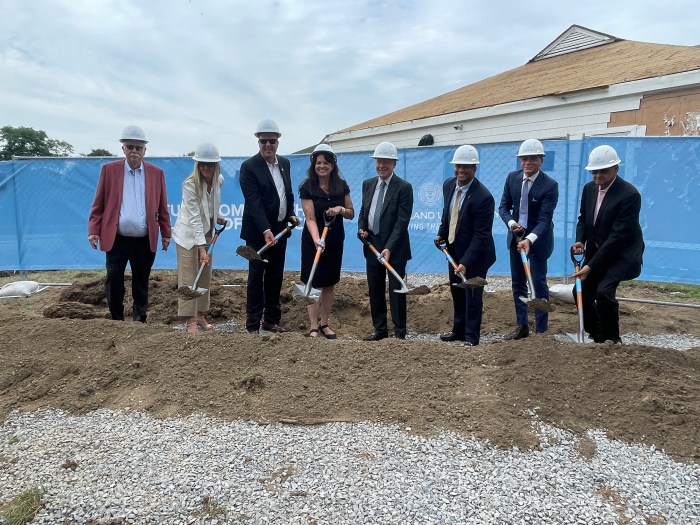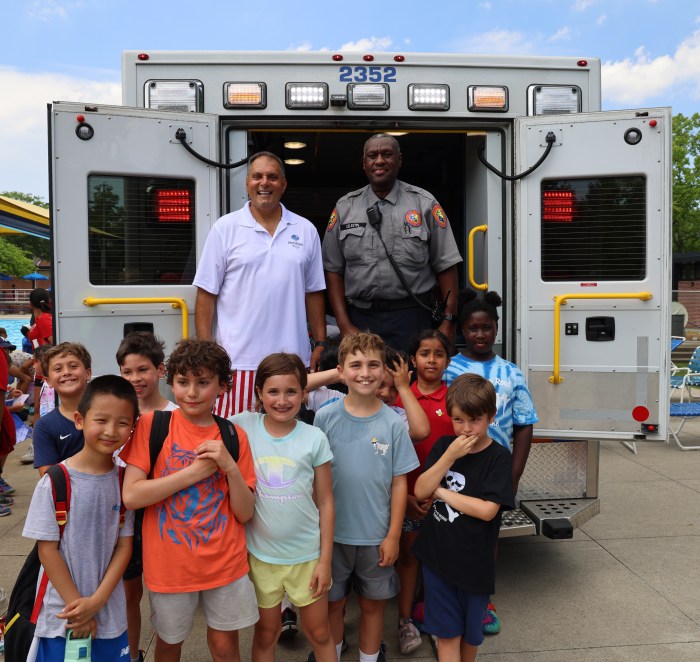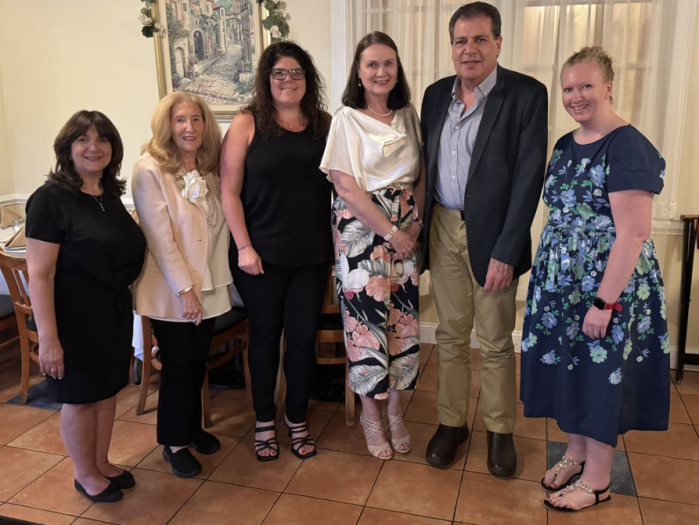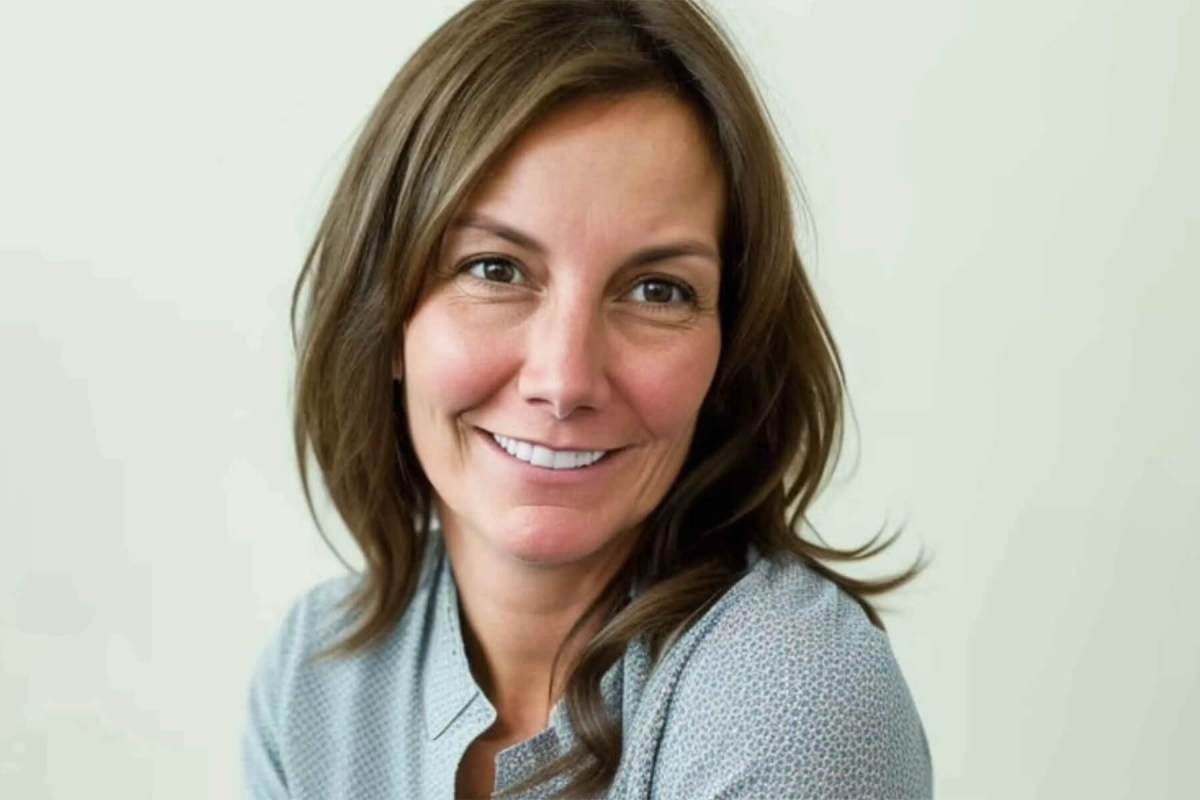Friends of the Bay introduced the public to its first “State of the Watershed Report” which summarized historical trends and existing environmental and land use conditions in the watershed at a meeting held in their Townsend Square office on Nov. 4. Erik Mas, P.E. and Dan Buttrick, P.E. of Fuss & O’Neill prepared the report and made the presentation.
It is a planning document that will lead to the formation of an advisory committee made up of professionals already involved in the work and members of the community who together can come up with ideas to benefit the watershed area.
Having the study in place will make it easier to receive grants for any proposed projects, explained Mr. Mas.
Using a PowerPoint presentation the men showed slides of the watershed area that told the underlying story of the water flowing throughout the Oyster Bay-Cold Spring-Mill Neck Creek watershed area. Mr. Mas pointed out that the area has several land uses including residential, industrial, commercial and transportation.
It also has an extremely valuable site, the Oyster Bay National Wildlife Refuge which includes the Mill Pond fed by the Mill Creek.
In looking at the watershed area, the study divided it into 14 sub watersheds and said in approximately 1/3 of the watershed area the runoff is captured in recharge basins. Mr. Mas called the area unique in that it has 70 “sumps” in the area, not counting those on private property.
He said the recharge basins were built in the 1950s to recharge the aquifers. He showed a slide of the one near the LIRR station, in TR Park, that is very visible and one off Singworth Street that is in a wooded area and not visible.
Mr. Mas said the study of the watershed area was valuable because of development issues; because the harbor is where the valuable OBNW refuge is located; because 90 percent of the oysters in NYS are harvested here; and because it is a wonderful habitat for birds, shellfish and waterfowl. The study will generate a watershed plan which is what is needed to get funding when applying for grants.
One of the areas of interest is where pathogens get into the system: they include the wastewater treatment plants; septic waste from cesspools; stormwater discharge; boat/marina mooring areas; and wildlife and waterfowl. The Friends of the Bay water quality monitoring has produced a great deal of data for the study in relation to dissolved oxygen levels in the water, he added.
There are about 1,000 acres in the watershed, and he said, “This is actually a great habitat with a lot of open space area, including some homes that have wooded lots.”
Sixty-four percent of the area is for residential land use; the open space covers about 10 percent of the area which is spread out in such locations as Planting Fields Arboretum Historic State Park; Bailey Arboretum; and Shu Swamp. Seven percent of the land area is for schools; and for example, 7 percent is used for roads.
Using satellite imaging they looked at the land use of the watershed indicating the impervious areas – roads and roofs which generate stormwater discharge.
They also did a watershed buildout analysis to see what areas are vulnerable. They found 141 acres in Mill River; 128 acres in the Oyster Bay Harbor and Cove Neck area; 77 acres in the Tiffany Creek area. They took out step slope areas and wetlands from the figures, said Mr. Mas – areas that should not be built upon. He said he had been told that currently there is some development coming up in the Planting Fields area of the watershed.
Mr. Mas said that it was better to build near the walkable downtown area than spreading out the developments into areas with more open space. He added that based on current zoning regulations, areas of Centre Island, Mill River and Tiffany Creek were in danger of changing to impervious areas.
An interesting part of the presentation showed a slide of Cold Spring Brook which he said was in good health, and bordered by riparian vegetation, with therefore no bank erosion. There were other areas of Cold Spring Brook where there was no tree cover, and was not a high quality habitat. Overall Cold Spring Brook had 82 percent vegetation; White’s Creek, 30 percent and Mill River 62 percent. Part of White’s Creek, he said, is underground. An interesting project would be to improve White’s Creek especially in the area near Commander Oil where there is the vestige of a park-like area that could thrive by giving it some attention.
Mr. Mas showed a slide of rainwater from a roof being directed into the street, which he said was not a good practice.
As to Commander Oil, he said “they make a good effort.” They have a boom that they use in case of a spill to contain oil.
One of the things the advisory committee can consider is “stream-lighting” areas of creeks that are currently underground: for example White’s Creek and Beekman Creek. [Beekman Creek is the name of the stream between the Mill Pond and Oyster Bay Harbor, where the Brown Trout live.]
Another suggestion is to encourage homeowners to learn that mowing a lawn to the edge of a stream is not a good practice. Streams need green vegetation bordering them to thrive properly. The stream corridor should be used to put water back into the ground. The top few inches of soil help clean up stormwater, he said.
Another area of consideration is helping fish passages, and creating fish ladders, to help fish migration. Trout Unlimited has recently done a watershed-wide study on that issue, he said.
Mr. Mas said another project is to restore the oyster reefs in Mill Neck Creek so the estuary area can be used as a shellfish spawning sanctuary.
Mr. Mas said the important thing was to create a steering committee; set goals; and identify projects. The plans should be set out in terms of short range goals of one to two years; mid-term goals – two to four years; and long term goals – for five to 10 years.
Turf Field
The question of turf fields was brought up by several people. Mr. Mas said the current plan to use an area that is now half asphalt and half grass offered a benefit in that it would get rid of a parking lot with the potential of stormwater runoff – while half would change from grass to turf. He said the important thing was that no pollution get into the groundwater. The field plans indicate stormwater would be collected under the field and sent to a stormwater recharge basin.
When questioned on their stand on the turf field, FOB Board President Beth Dalton-Costello said the group sent a letter to the town asking them to review the work for any environmental issues, adding that if they do put in the turf field that they do so in a responsible way.
Larry Weiss asked about an oil slick visible in the harbor around the marina after a rain storm, adding that there were stormwater outlets in the marina area. Mr. Buttrick said it was difficult to do. He suggested they collect the first flush when it starts raining to see if it contains oil. He said it was complicated to trace and that it doesn’t take a lot of oil to create a sheen.
Overall it was an informative meeting and most importantly it is the beginning of a process to continue to protect the harbor that may also enhance the upland areas in the watershed area.
Future Seminars
Patricia Aitken, FOB acting director, said this is the first of a series of lectures. The next one is on Nov. 16 at the Locust Valley Library on Stormwater Education. It is hosted by FOB, the North Shore Land Alliance and the Matinecock Neighborhood Association. It will deal with the care of septic tanks – the cesspools most of this area deals with in an area devoid of a sewer system.
Ms. Aitken said, “Water quality is an important issue for the planet as a whole, and a Long Island Water Quality Symposium will be held at the deSeversky Center on Friday, Nov. 20 on water quality management for Long Island.” Over the past 20 years, Long Island’s population growth has continued with more land developed, new pollutants released into the environment, and water use increased.
The second Friends of the Bay seminar will take place on Dec. 2 in their 2 Townsend Square office/meeting room. There will be lectures monthly, starting in January. Call 922-6666 for more information.































